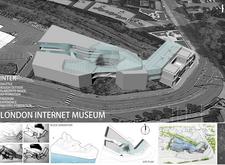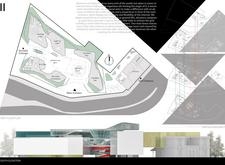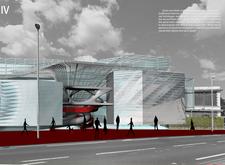5 key facts about this project
### Project Overview
The London Internet Museum is situated in London and is designed to explore the intersection of technology and culture within a museum framework. The architectural intent focuses on creating an interactive environment that fosters visitor engagement and education through immersive experiences. The design reflects the evolving nature of the internet, highlighting the importance of fluidity and connectivity in both digital and physical spaces.
### Spatial Configuration
The museum's layout features a series of interconnected volumes that symbolize the complex relationships of the digital landscape. This organization encourages exploration and varied user experiences, allowing visitors to navigate the exhibits in a non-linear fashion. Notable design elements include a dynamic roof structure that embodies the concept of information flow, and multiple entrances that invite access from various directions, promoting an informal and welcoming environment.
### Material Selection
The architectural palette incorporates an array of materials that enhance both aesthetic appeal and functionality. Extensive use of glass creates transparent walls, fostering openness and accessibility. Concrete forms the structural backbone, while metal elements provide movement and connectivity between different areas. Additionally, composite materials used in the roofing facilitate lightweight yet durable construction, contributing to an engaging interplay of light and shadow throughout the museum.





















































